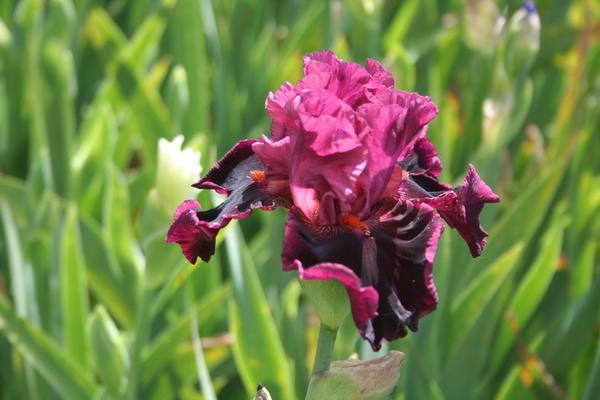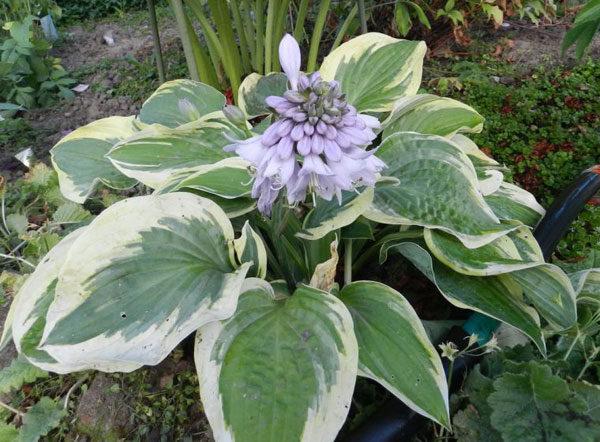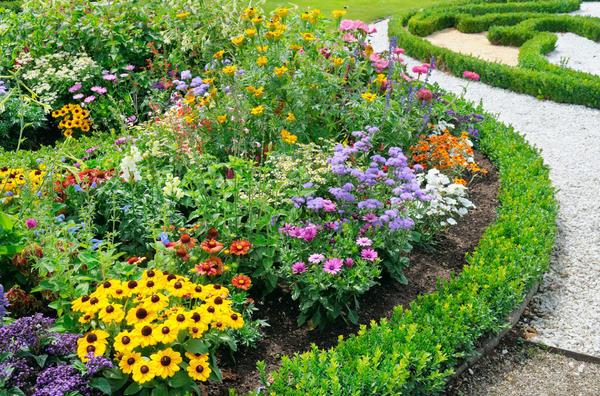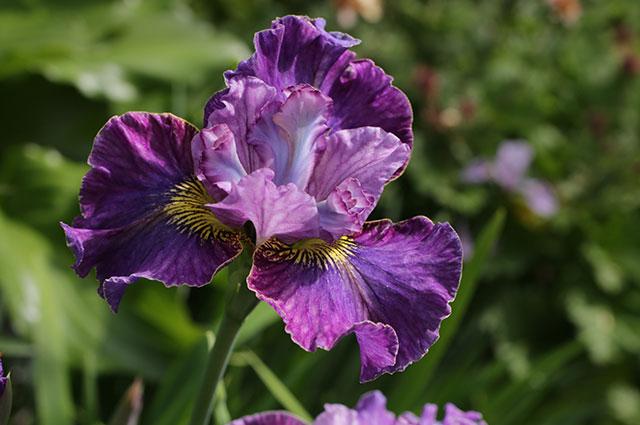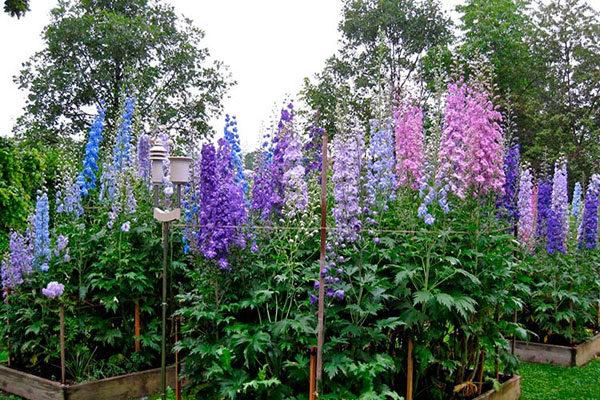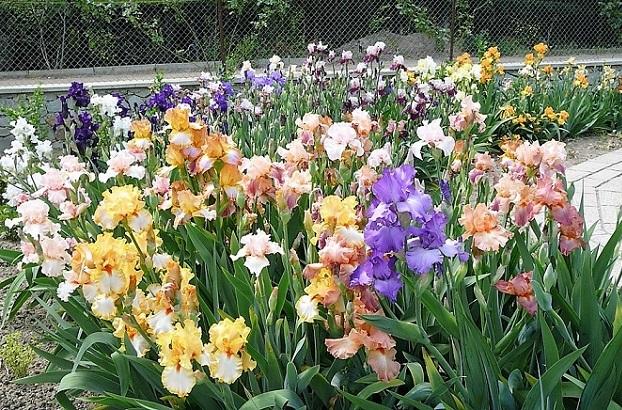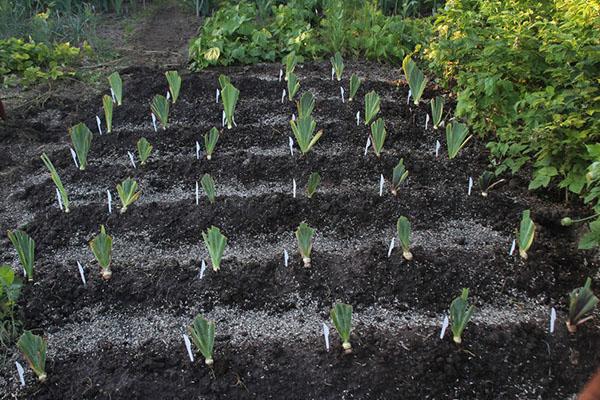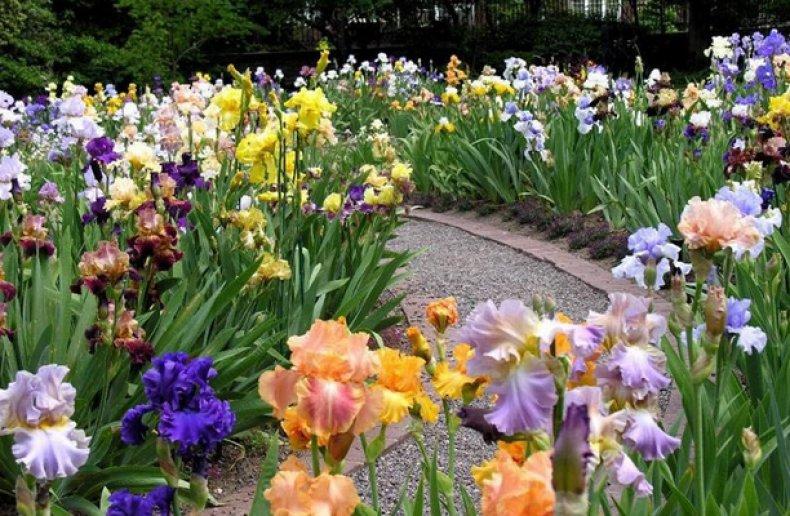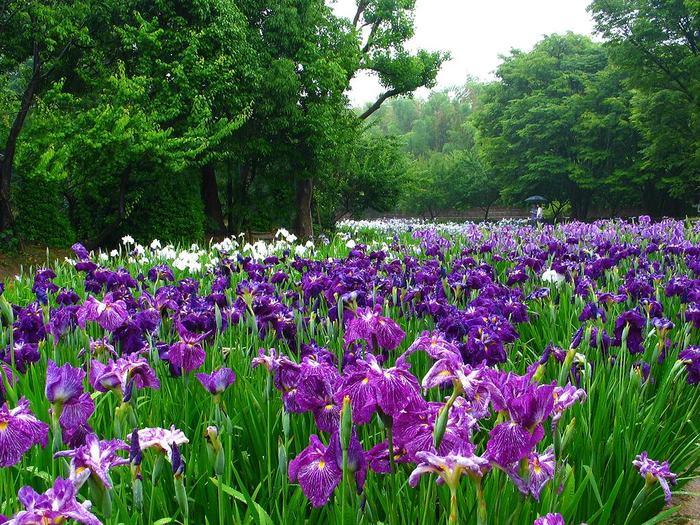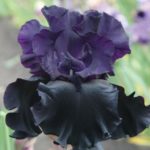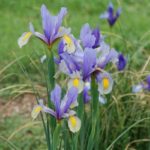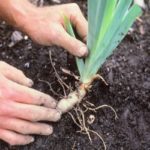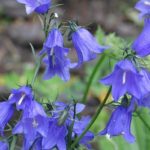By the second half of July, many flowers fade. But it is precisely at this time that the Japanese iris blooms. The flower, which appeared several thousand years ago, is distinguished by its bizarre shapes, which ensured the plant's widespread distribution. There are more than 1,000 varieties of Japanese iris, differing in appearance, flowering time, place of growth and care requirements.
- Description and appearance of Japanese irises
- Variety of types of Japanese irises
- Good Omen
- Queens Tiara
- Nessa no Mai
- Frekld Geisha
- Kogesho
- Features of agricultural technology for Japanese irises
- Requirements for a site for planting Japanese irises
- Dividing and planting Japanese iris bushes
- Fertilizing Japanese irises
- Pests and diseases of Japanese irises
- Preparing Japanese irises for winter
- Growing Japanese irises in a container
- Control of diseases and pests of Japanese irises
Description and appearance of Japanese irises
This variety of irises grows not only in Japan, but also far beyond the borders of the Land of the Rising Sun. The plant received this name due to the fact that it was cultivated here for more than 500 years. However, wild varieties of the plant are found in the Russian Far East. Iris has Chinese roots, since it was in the Celestial Empire that the plant began to be cultivated. Later, the Japanese adopted the culture of growing flowers from their neighbors.
Despite the wide variety of varieties, all Japanese irises have one distinctive feature: a large flower of a non-standard shape.
Regardless of the type, each plant has the following characteristic features:
- superficial root system;
- stems are short or branched;
- leaves are sword-shaped and 25-60 centimeters long, grouped along the stem;
- the diameter of the flowers is 15-25 centimeters;
- flowers are single or collected in inflorescences;
- rare varieties of iris emit a scent;
- fades within 3-5 days;
- grows with sufficient watering and on the sunny side;
- It tolerates diseases well and does not tolerate frost well.
The flowers of the Japanese iris are two-tiered: the first is formed by perianth lobes (“waterfalls”), the second is formed by the inner petals (“dome”). At the base there is a tube that looks like an orchid. Japanese iris comes in a variety of colors, ranging from light to dark (even black) shades.
Variety of types of Japanese irises
There are more than one thousand species of Japanese iris. There are varieties that grow only in water. Others are “attracted” to areas with infrequent rainfall.There are varieties whose length reaches one meter.
Good Omen
The Good Omen variety is distinguished by the following characteristics:
- leaves are lilac-violet;
- stem length - 80-120 centimeters;
- resists exposure to bacteria.
The plant has poor frost resistance, so it requires shelter for the winter.
Queens Tiara
Queens Tiara reaches 90 cm in height. The petals of this flower have a lilac-white hue and reach 15 centimeters in diameter. Unlike other varieties of Japanese iris, Queens Tiara tolerates frost well.
Nessa no Mai
The height of the iris of this variety grows by 70-80 centimeters. The flowers of the plant are distinguished by a variety of shades: the central part is white, and there are purple and yellow spots on the petals. The plant does not require abundant watering and dies in waterlogged (wet) areas. The Nessa no Mai variety does not tolerate frost well, so the iris must be covered before the onset of cold weather.
Frekld Geisha
The average height of the stems of the iris variety Frekld Geisha is 85 centimeters. The leaves have a white color, which is “diluted” with lilac spots. Irises of the Frekld Geisha variety grow in light, loamy, acid-free soils. The plant dies in waterlogged soil and frosts.
Kogesho
The variety belongs to the dwarf variety of Japanese iris. The length of the Kogesho stem reaches 60-80 centimeters. The diameter of the flower is 19 centimeters. Kogesho's petals are white with yellow spots, and the central part is pink. The variety grows in sunny and dry areas, hidden from strong winds.
Features of agricultural technology for Japanese irises
Japanese irises rarely get sick. However, this culture makes relatively high demands in terms of care and growing location.Before planting a plant, it is recommended to decide on a variety suitable for a particular growing region.
Most irises do not tolerate frost well, but appear from under the soil in March-April. Therefore, when growing in Central Russia, it is worth purchasing high-quality covering material.
Irises do not tolerate contact with potassium, and therefore the plant is not recommended to be planted in limestone soils. Soil with a slightly acidic or neutral reaction is considered optimal for a flower. The plant can also be planted in a soil mixture consisting of:
- rotted organic matter (leaves, grass);
- loam;
- phosphorus fertilizer;
- peat
When planting, the leaves and root system are shortened. It is recommended to make holes for iris at a distance of 30-35 centimeters. When dividing a bush, flowers should be planted deeper than they were previously.
The plant loves rainy soil, to retain which gardeners often form sides around the bed. It must be remembered that iris does not grow well in waterlogged soil. Therefore, when organizing the sides, it is necessary to provide drainage for rainwater.
Irises grow in well-lit areas. When choosing a location, it is recommended to give preference to the sunny side, away from tall trees. The plant is buried no more than 3-7 centimeters. This layer of soil is enough for normal nutrition and protection from drying out. To mulch the soil, use pine nut shells, pine waste or crushed bark.
After planting, the flowers should be watered generously. If Japanese irises are planted in the territory of Central Russia, in the spring it is recommended to cover the plant with plastic film, organizing a small greenhouse.
Requirements for a site for planting Japanese irises
The basic requirements for the site were given earlier. At growing irises in open ground abundant watering is required (especially during the flowering period). At the same time, it is important not to allow the soil to become waterlogged. For irrigation, you should use rainwater, for the collection of which separate containers are installed on the site.
To ensure that moisture lingers near the flowers for a long time, gardeners make small holes near the bushes.
Before planting, it is recommended to clear the bed of weeds and mix the soil with pre-prepared compost. Irises are allowed to be planted no more than once every 5-7 years.
Dividing and planting Japanese iris bushes
It is recommended to plant and divide flowers:
- in northern latitudes - at the end of August or beginning of September;
- in the southern regions - at the end of September or beginning of October;
- for the south and north - in the second half of May.
When dividing or planting, it is necessary to remove old and dead roots that do not have buds. The plant is dried for several days and then planted in the prepared area. After purchasing, it is not recommended to keep flowers in the cold for a long time. Roots that do not receive moisture dry out and the irises die.
If necessary, the plant is first planted in a container and kept until mid-May at a temperature of 15-18 degrees.
It is recommended to place irises on the site at a distance of 30 centimeters. When forming beds, you can plant plants closer to each other. Rhizomes and leaves are shortened by 2/3. During initial planting, the flower is deepened by 3-5 centimeters, and when divided - by 5-7 centimeters.
When placing a plant on a site, the soil is first mulched with peat (necessary to maintain moisture) and pine waste, and then watered abundantly.
Fertilizing Japanese irises
Fertilizer for Japanese irises applied twice or thrice a year, during the growing season. The flower is fed for the first time after planting. For this, mineral fertilizers or a weak solution of cow manure are used (mixed with water in a ratio of 1:10). During the growth period, it is recommended to regularly mulch the plant. This promotes a uniform and abundant flow of oxygen, due to which young roots develop.
In summer, Japanese irises are sprayed with iron chelate or a weak solution of manganese. This procedure is carried out to prevent early yellowing of leaves.
Pests and diseases of Japanese irises
Japanese irises rarely get sick. However, the plant is susceptible to rot in waterlogged soils. Therefore, before planting a flower, it is recommended to organize a drainage layer by adding sand or fine expanded clay to the soil. This will prevent acidification and waterlogging of the soil.
Irises are susceptible to thrips. If signs of infestation by these insects are detected, the flowers should be treated with insecticides. In autumn, affected leaves and petals should be cut off and burned. This prevents re-infestation of new plants the following year, as insect eggs are destroyed.
Preparing Japanese irises for winter
Irises begin to prepare for winter in mid-October. To do this, the plant is cut to 15 centimeters. If non-frost-resistant varieties are grown on the site, then the flowers are then covered with a 15-centimeter layer of mulch or spruce branches.The optimal solution for wintering is the following option: the plant is covered with dry leaves, and the top is covered with plastic film stretched over wire arches.
After the onset of spring, it is recommended to stir the mulch periodically, thereby opening access to oxygen. You can completely release the flowers from the shelter in mid-May.
Growing Japanese irises in a container
Japanese irises, due to their growth characteristics (the rhizomes do not spread out), are suitable for growing in containers. This planting method is used in cases where the plant is placed in reservoirs. It is allowed to lower flowers into water 5-8 centimeters.
It should be planted in reservoirs with the onset of summer. Irises are removed from the water in August, when the air (and water) temperature begins to drop at night. After this, the container must be buried in the greenhouse and left until next year, following the previously described manipulations to prepare for winter.
When growing Japanese irises in a container, it is necessary to regularly add and mulch the soil. This is due to the fact that the plant stretches upward, thereby forming a hummock around the trunk. When grown in containers, it is recommended to divide and replant flowers more often. Otherwise, over time, the irises will not have enough space for the development of the root system, which will lead to the death of the crop.
Control of diseases and pests of Japanese irises
Common diseases that Japanese irises are susceptible to include:
- Bacteriosis. There is no specific treatment for this disease. Leaves affected by bacteriosis are removed and burned. If necessary, flowers are removed from the flowerbed along with the roots.
- Wet rot.To prevent infection, the roots are kept for half an hour in a weak solution of potassium permanganate before planting.
- Fusarium (gray rot). To prevent infection and treat, a 5% solution of bicarbonate of soda or copper sulfate is used.
- Heterosporiasis. To prevent infection, it is necessary to introduce phosphorus fertilizers in doses. Fungicides are used in the treatment of heterosporiosis.
- Botrytis. Triazole class fungicides are used to treat the disease.
- Leaf mosaic. The affected leaves must be removed, and the plant must be sprayed with a 0.2 percent solution of copper oxychloride.
If thrips are detected, the flowers should be treated with a mixture obtained from 90 grams of karbofos emulsion and 10 liters of water. The plant is sprayed once a week. To combat the bronze beetle, use a Kinmiks solution.

